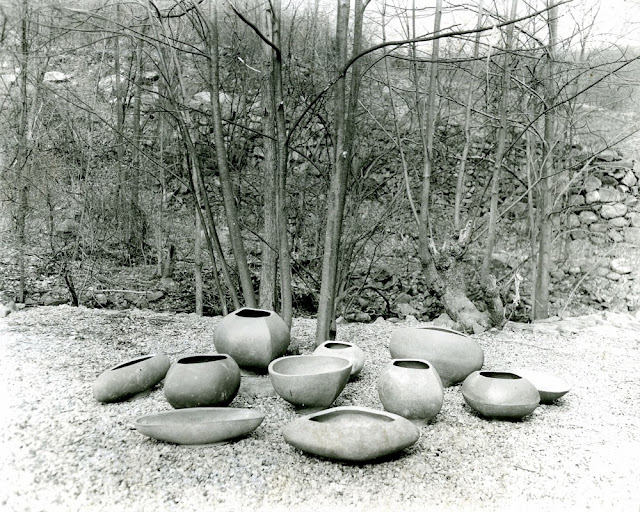There are many shows like it around the country and around
the world, but the Art School’s Pottery Show & Sale is acknowledged as a
forerunner of shows of its kind. What makes this one so special? Surely,
success is due in part to the discerning eye of Karen Karnes, internationally
renowned ceramic artist and the show’s curator since its inception in
1974.
As
a friend of the school's co-founder and fellow master potter Mikhail
Zakin, Karen Karnes stepped up as curator of the fundraiser show due to
her acknowledged authority in the medium. By selecting ceramic artisans
for
the high caliber of their craft and innovation and placing them in
direct
contact with pottery enthusiasts and collectors, this once yearly
honey-pot of
ceramic artistry became valuable for connecting passionate and
knowledgeable
buyers to American artisans at the height of their craft.
While the show continues to be crucial to the economic
landscape of the non-profit art school it supports, it also set a standard for
shows of its kind. The show is almost
entirely staffed by volunteers from the community who donate their time and
energy and even welcome potters into their homes and share meals for the
long-weekend of the sale. Here are some
words from the show’s curator on how our Pottery Show & Sale came to be:
“Thirty-nine years ago when Ann and I offered to make a
benefit pottery sale for the Art School at Old Church we were following the
path of many organizations choosing to raise money in this way. I thought to make an event that would
consider the potters who offered their work.
Potters would only need to both bring and remove their work at the end –
we would set it up and sell it and send payment for work sold within the first
week after the conclusion of the sale.
In the early years I invited potters who lived nearby, but
soon I was attending craft fairs to choose potters, and my attention was always
aware as I traveled, looking for pottery that would make up a rich and varied
exhibition, one that showed a wide range of styles. I have always wanted each person who attended
the show to see something they needed to own, and to have all the work be the
best of its kind. Soon potter friends were
able to recommend new clay workers.
It was also important to make an exciting potters’ meeting,
as I lured them from far away with the promise of a bed in a member volunteer’s
home, a delicious potters’ supper (which I cooked in the early years), and the
possibility of a day or two in New York City.
…I have a policy of inviting new potters every year, though
there is also a core group who is invited every year as well. It is always a difficult choice; there are so
many excellent, sensitive and original young potters at work now, for the field
is steadily widening.”
Join us as we welcome this year’s group of
contemporary potters through a series of short articles and luscious images of
their cutting-edge ceramic work.
 |
| A collection of pots by Karen Karnes, ca. 1950s (Image courtesy of American Craft Council Library at craftcouncil.org) |
 Inspiration springs from my belief
that pottery has the potential to function as expressive art each time it
performs with the user, thereby engaging us in a highly personal and primal
way. Even at rest the reference to use embodied in the pots’ familiar form
reminds us of the place it holds in our domestic landscape, and thereby grounds
us however unconsciously in that same setting… It can remind us of our need as
social beings to celebrate common experience with objects that stimulate our
memories and all our senses.
Inspiration springs from my belief
that pottery has the potential to function as expressive art each time it
performs with the user, thereby engaging us in a highly personal and primal
way. Even at rest the reference to use embodied in the pots’ familiar form
reminds us of the place it holds in our domestic landscape, and thereby grounds
us however unconsciously in that same setting… It can remind us of our need as
social beings to celebrate common experience with objects that stimulate our
memories and all our senses.





